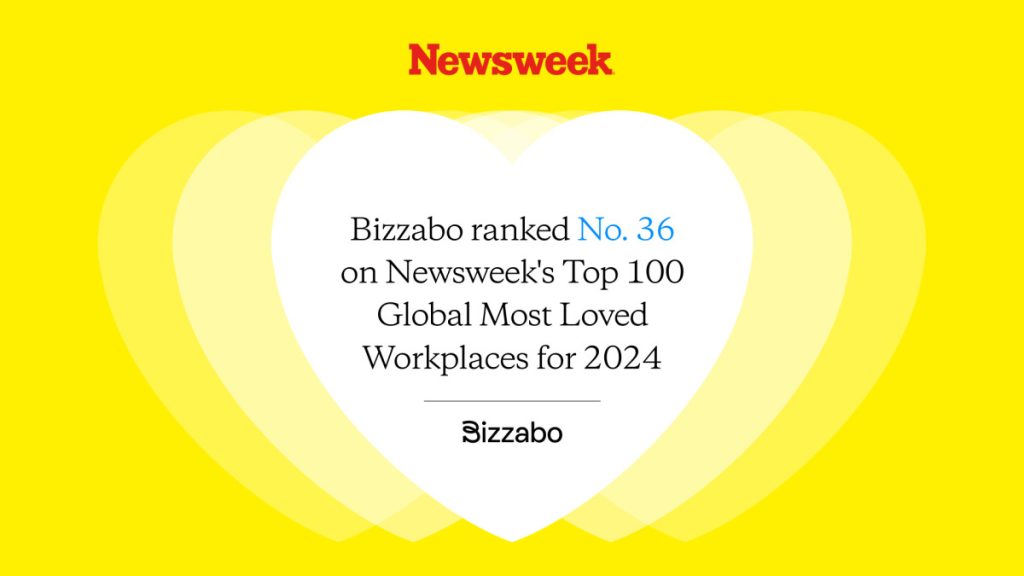The Events Industry’s Top Marketing Statistics, Trends, and Data


The events industry is back and better than ever, with 60% of events occurring in-person, 35% virtually, and 5% in a hybrid format (Bizzabo, 2024). To inspire your event strategy or give you some data to use for your next event marketing presentation, we’ve compiled a comprehensive list of marketing and event statistics that provide an overview of the industry’s state and trends.
According to Allied Market Research, the global events industry — valued at $1.1 trillion in 2019 — is expected to increase to $2.1 trillion by 2032, which is an optimistic outlook we’re here for. Let’s dive in!
In-person Event Statistics
According to The state of in-person B2B conferences report, 80.4% of organizers identify in-person events as their organization’s most impactful marketing channel.
As a result, according to the report’s findings, 52.1% of event organizers saw increased attendance at in-person events last year, while 86.4% of events teams planned to maintain or increase the number of in-person events on tap this year. Furthermore, 16% of marketers plan to try experiential marketing like engaging audiences in real life with pop-ups and events for the first time this year, according to HubSpot’s 2024 State of Marketing Report.
- Events teams expect up to a 10% increase in attendee numbers in 2024. (Knowland, 2024)
- 70% of attendees say that in-person events are the best sources for training and professional content. (Freeman, 2024)
- 75% say demonstrations and hands-on activities are the ideal format for education and receiving technical information (Freeman, 2024)
- 81% of attendees are most interested in networking with experts at events while 68% enjoy meeting new contacts generally. (Freeman, 2024)
- 80% of attendees say in-person events are the most trusted way to discover new products and services. (Freeman, 2024)
- 87% of attendees say discovering new products and solutions is the most important element of a valuable in-person experience, up 5% from 2023. (Freeman, 2024)
- Just 10% of event professionals think attendance reduction at in-person events is a “permanent” problem, down from 17% in 2023. (Freeman, 2024)
- 82% of event attendees prefer to attend in-person. (Freeman, 2024)
- 80% of attendees agree that in-person events are the most trustworthy source of information, up 5% from the previous year. (Freeman, 2024)
- Just 8% of professionals plan to attend fewer events in 2024, down from 17% in 2023. (Freeman, 2024)
- 58% of events teams plan to host more small in-person events with fewer than 200 attendees. (Forrester, 2024)
- 48% of events teams say that events are more important today than they were before the pandemic. (Forrester, 2024)
- 16% of marketers plan to try experiential marketing like engaging audiences in real life with pop-ups and events for the first time this year. (HubSpot, 2024)
- 52.1% of organizers reported increased attendance at their B2B in-person conferences in the past year. (Bizzabo, 2023)
- 86.4% of organizers planned to maintain or increase the number of in-person events in 2024 compared to 2023. (Bizzabo, 2023)
- 47.2% of organizers reported that their events team had grown in the past year. (Bizzabo, 2023)
- 76.6% of organizers consider in-person conferences critical to their organization’s overall success. (Bizzabo, 2023)
- 80.4% of organizers identify in-person events as their organization’s most impactful marketing channel. (Bizzabo, 2023)
- 75.9% of organizers believe in-person conferences will become increasingly critical to their organization’s success in the coming years. (Bizzabo, 2023)
- 71.2% of organizers struggle to prove in-person conference ROI to key stakeholders. (Bizzabo, 2023)
- 72.7% of organizers say their leadership team and C-suite actively support their in-person event strategies. (Bizzabo, 2023)
- 69.7% of attendees consider in-person B2B conferences the best opportunity to learn about new products or services. (Bizzabo, 2023)
- 82.8% of organizers believe in-person conferences provide the ideal networking environment. (Bizzabo, 2023)
- 77.7% of attendees share the sentiment that in-person conferences provide an ideal networking environment. (Bizzabo, 2023)
- 55% of event professionals are planning to have most of their events be in-person experiences. (Bizzabo, 2023)
- 63% of event professionals predict attendee numbers will return to pre-pandemic levels in the next one to two years, (AmEx Global Meetings and Events Forecast, 2023)
- Meeting professionals expect more guest rooms (59%) and meeting spaces (58%) to be available in 2024. (AmEx Global Meetings and Events Forecast, 2023)
- 64% of consumers retain positive impressions of brands they interact with
- at live events. (Freeman, 2024)
- 77% of consumers say their trust increased somewhat or a lot following their interaction with a brand at a live event. (Freeman, 2024)
- 72% of event organizers agree that in-person events are a crucial part of their marketing strategy. (Bizzabo, 2022)

Event Budget Statistics
As economic challenges continue to plague every industry, event budgeting has taken center stage. Events teams are increasingly trying to figure out how to do more with less, aiming to strike the perfect balance between planning cost-effective events and delivering unforgettable event experiences.
To this end, many events teams are doubling down on event sponsorship initiatives, trying to land more partners to offset event costs and build long-term, mutually beneficial relationships. While onboarding sponsors is no easy feat — budgets have often already been allocated and would-be sponsors either don’t confirm until the last minute or back out during the 11th hour — event sponsorship still plays a crucial role in event budgeting. Luckily, the average organization spends more money on sponsoring and attending events (53%) than hosting events (47%), which means there are sponsor dollars to be hard, however difficult they may be to secure (Forrester, 2024).
What does today’s state of event marketing budgets look like? Let’s take a look.
- 33% of event budgets are decreasing while 32% are increasing. (Forrester, 2024)
- 53% of organizations spend more money on sponsoring and attending events. (Forrester, 2024)
- 47% of organizations spend more on hosting events than on sponsoring/attending events. (Forrester, 2024)
- 54.5% of organizers are managing event budgets of more than $500,000; 22.3% have budgets of $1 million or more. (Bizzabo, 2023)
- Marketing tops the list of where organizers are spending their budgets, followed by catering and venue costs. (Bizzabo, 2023)
- The average cost per attendee is expected to increase globally — by 1.5% for small and simple meetings to 3% for conferences and trade shows. (AmEx Global Meetings and Events Forecast, 2023)
- If budgets were reduced, 23% of respondents said they’d cut offsite optional activities and 20% said they’d cut the number of nights. (AmEx Global Meetings and Events Forecast, 2023)
- If budgets were increased by 10%, 32% said they’d improve the onsite experience and 23% said they’d increase the use of technology. (AmEx Global Meetings and Events Forecast, 2023)
- 46.3% of event professionals consider the increased price of putting on events to be the biggest challenge they face. (Knowland, 2022)
“Average rates continue to rise due to higher labor, food, and other fixed costs, along with the impact of inflation – we believe that trend will continue with high demand.”
Jonathan Kaplan | VP, Global Sales Strategy | IHG
- 21% are concerned about their clients’ reduced event budgets. (Knowland, 2022)
- 89.7% of event organizers think that offering flexible contract terms is very or extremely important. (Knowland, 2022)
- Just 7% of event professionals aren’t concerned about a recession and its potential impact on the industry. (Knowland, 2022)

B2B Event Industry Statistics
The B2B event industry is on fire, with no signs of slowing down. Events teams are increasingly more optimistic about the state of the industry, with more teams planning to put on more events. That said, event organizers face several challenges, including rising costs. To get a better idea of the overall state of the B2B event industry, check out these stats:
- For 95% of events teams, demonstrating event ROI is the top priority. (Forrester, 2024)
- 50% of in-person event attendees report a decreased travel budget in 2024. (Freeman, 2024)
- 47% of event planners agree that costs are the top area of dissatisfaction. (Knowland, 2024)
- Up to a 50% increase is expected for food and beverage and audio/video costs. (Knowland, 2024)
- 53% of events teams are considering moving meetings to secondary markets to reduce costs. (Knowland, 2024)
- According to 94% of events teams, pre-event email marketing is the most important type of content. (Forrester, 2024)
- 53% of event professionals agree that decreasing budgets are the biggest challenge they face. (Bizzabo, 2023)
- 20% of event professionals are most concerned about burnout. (Bizzabo, 2023)
- 45% of event organizers are prioritizing attendee engagement, while 38% are prioritizing attendance, and 35% are prioritizing budgets. (Bizzabo, 2022)
- Just 22% of event organizers are satisfied with the responsiveness they experience from hotel and venue staff. (Knowland, 2022)
- 75% of event planners don’t expect the number of meetings to drop. (Knowland, 2023)
Virtual Event Statistics
Although 96% of event marketers don’t believe that virtual events will ever replace in-person experiences, they believe this event format still has merit, and hybrid events continue to be a priority. According to Grand View Research, the global virtual events market size was estimated at $78.53 billion in 2023 but is expected to grow at a compound annual growth rate of 18.8% from 2023 to 2030.
Case in point: On the Bizzabo platform, 35% of events in early 2024 were virtual. Other research reflects this reality. While the events industry is largely in-person, virtual events are here to stay in some form.
- Just 1% of attendees prefer to attend events remotely over other options. (Freeman, 2024)
- 59% of event professionals agree that virtual events are a permanent fixture of their event strategy. (Forrester, 2024)
- Attendees sign up for online events if they offer unique or compelling content (67% of respondents) or the ability to access the content on-demand (60%). (Freeman, 2024)
- 53% of attendees say online events are a top source for training and professional content. (Freeman, 2024)
- 35% of attendees go to online events to learn and access content and 31% prefer this format for its overall ease and convenience. (Freeman, 2024)
- 23% of marketers are leveraging virtual events, webinars, and conferences as part of their marketing strategy. (HubSpot, 2023)
- 32.2% of attendees prefer webinars + virtual events. (Bizzabo, 2023)
- 13.8% of organizations have budgets in excess of $500,000 for virtual events, while 14.2% can spend between $100,000 and $500,000, and 18% can spend between $10,000 and $100,000. (Elevant, 2022)

Hybrid Event Statistics
Many events teams are running hybrid events to make their event content more accessible and reach a wider audience — all while giving attendees the choice of how they want to experience the event.
- 40.6% of attendee respondents said hybrid was their favorite event format. (Bizzabo, 2023)
- 67.8% of attendees said their favorite event format was either an in-person event or a hybrid event. (Bizzabo, 2023)
- 67.8% of attendees prefer in-person + hybrid events vs. 32.2% who prefer webinars + virtual events. (Bizzabo, 2023)
- 87.1% of organizers say at least half of their B2B events are in-person. (Bizzabo, 2023)
- 70% of events are now hybrid. (Skift Meetings, 2022)
- 50% of hybrid speakers said that feeling connected is extremely important to them. (Bizzabo, 2022)
- 35% of event organizers say that finding the right venue to host a hybrid event is a challenge. (Markletic)
- 30% of event organizers plan to switch to hybrid for their next event. (Bizzabo, 2022)
- 46% of event organizers say that speakers had difficulties engaging a virtual and in-person audience simultaneously. (Markletic)
- 38% of event organizers say it takes more preparation time to host a hybrid event compared to hosting a dedicated in-person or virtual event. (Markletic)
Event Technology Statistics
Event technology is an integral part of any event. According to the Freeman Trends Report Q1 2024, 44% of event attendees agree that technology that makes consuming events easier is one of the most important event experience elements.
In response, more organizations are investing in event technology. A recent Forrester report, for example, found that 24% of organizations are spending between $10,000 and $50,000 on event tech annually while 21% are spending between $50,000 and $250,000, 9% are spending between $250,000 and $1 million, and 8% are spending $1 million or more; 2% of organizations say they aren’t using any event tech.
However, according to Forrester’s findings, many organizations are using a variety of tools to manage events:
- 73% say they rely on between one and five event tech solutions.
- 12% say they’re using six to 10 tools.
- 21% of events teams have fully consolidated their event tech stack.
This section includes statistics related to event management software to help you meet attendee expectations regarding event tech and keep up with the competition.
- 72.5% of organizers recognized the substantial contribution of their event platform to positive outcomes at recent conferences. (Bizzabo, 2023)
- 67.4% of organizers switched or intend to switch event software vendors in the next year. (Bizzabo, 2023)
- 62.9% of attendees expect in-person conferences to use modern technology like smart badges. (Bizzabo, 2023)
- 44% of event attendees agree that technology that makes consuming events easier is one of the most important event experience elements. (Freeman, 2024)
- The global event management software market, which was valued at $5.6 billion in 2019, is expected to be worth $18.4 billion in 2029, growing 12.9% each year. (Fairfield Market Research, 2022)
- 41.5% of professionals are willing to pay up to $5,000 for new virtual event technology. (Zippia, 2022)
- 67.5% of attendees consider it vital for events to offer a mobile event app. (Bizzabo, 2023)
- The top three challenges with event technology are engagement, cost, and integration, in that order. (Skiff Meetings, 2022)
- 73% of event professionals say they use between one and five event technologies. (Forrester, 2024)
- 12% of event professionals say they use between six and 10 event technologies. (Forrester, 2024)
- 21% of event professionals say they’ve consolidated their event tech stack. (Forrester, 2024)
- 24% of organizations spend between $10,000 and $50,000 annually on event tech. (Forrester, 2024)
- 21% of organizations spend between $50,000 and $250,000 annually on event tech. (Forrester, 2024)
- 9% of organizations spend between $250,000 and $1 million annually on event tech. (Forrester, 2024)
- 8% of organizations spend between $1 million or more annually on event tech. (Forrester, 2024)
- 2% of organizations say they aren’t using any event tech. (Forrester, 2024)

AI in Events Statistics
The rise of artificial intelligence tools that can help event organizers scale operations and work smarter is undeniably the biggest leap we’ve seen in technology in the past few years. But how many event technology providers will meet the demand for more AI-powered tools? It’s still too early to say what the next five to 10 years will look like, but there are some compelling stats to consider.
- 80% of events teams say AI offers value for personalized mobile apps. (Knowland, 2024)
- 61% of event technology companies offer at least one AI-powered feature, and matchmaking is the most common use of AI. (Skift, 2023)
- Nearly 40% of event technology companies use AI to provide personalized connection suggestions to attendees, one-third use AI to power content suggestions, and 14.8% offer AI-powered chatbots. (Skift, 2023)
- Generative AI’s impact on productivity could add between $2.6 trillion and $4.4 trillion annually to the global economy. (McKinsey & Company, 2023)

Attendee Engagement Statistics
Audience engagement continues to be top of mind for attendees and organizers alike, because an engaged audience is a happy audience and NPS scores count. Although virtual events continue to present unique challenges for engagement, organizers are committed to making them work.
- 64% of attendees say immersive experiences are the most important event experience element. (Freeman, 2024)
- 64% of consumers retain positive impressions of brands they interact with
- at live events. (Freeman, 2024)
- 77% of consumers say their trust increased somewhat or a lot following their interaction with a brand at a live event. (Freeman, 2024)
- 92% of events teams are focused on improving post-event attendee engagement. (Forrester, 2024)
- 39% of attendees want to hear keynotes about innovation while 34% prefer keynotes from industry leaders and experts. (Freeman, 2024)
- 38% of attendees want to feel informed after keynotes and 35% want to feel inspired or motivated. (Freeman, 2024)
- 50% of organizers found moderating Q&A with virtual and in-person audiences to be a challenging aspect of hybrid events. (Bizzabo, 2022)
- 68.7% of event professionals agree that using technology to improve the attendee experience is a trend with staying power. (Knowland, 2022)
- 67% of hybrid event speakers found polls a helpful way to connect with audiences. (Bizzabo, 2022)
- 46% of organizers found networking to be a challenging aspect of organizing hybrid events. (Bizzabo, 2022)
- 44% of event attendees agree that technology that makes consuming events easier is one of the most important event experience elements. (Freeman, 2024)
DE&I and Sustainability Statistics
Diversity, equity, and inclusion (DE&I) and sustainability continue to be at the forefront of event marketers’ minds. Judging from the stats below, the industry is moving forward but still has a lot of work to do to promote diverse events, including the need for speaker selections to be more diverse.
- 60% of events teams say DE&I is top of mind. (Knowland, 2024)
- Almost 50% of events don’t have sustainability requirements. (Knowland, 2024)
- 55% of events teams are aiming to make their events more inclusive and accessible. (Forrester, 2024)
- 47% of events teams are focused on reducing the environmental impact of events. (Forrester, 2024)
- 80% of planners say their organizations take sustainability into account when planning events. (AmEx Global Meetings and Events Forecast, 2023)
- 81% of planners say their organizations actively strive to incorporate a DE&I strategy into their meetings and events by choosing diverse speakers and working with diverse or minority-owned suppliers. (AmEx Global Meetings and Events Forecast, 2023)
- 76% of organizations have a defined sustainable meeting program strategy in place. (AmEx Global Meetings and Events Forecast, 2023)
- 61% of respondents believe that the events industry has improved, but not enough, when it comes to diversity in speaker lineups. (Bizzabo, 2022)
- 52.8% of event professionals expect a focus on DE&I will remain in the events industry. (Knowland, 2022)

Snapshot: Events on the Bizzabo Platform
Here are some insights into how customers were using Bizzabo in the first half of 2024:
- 60% of events were in-person, 35% were virtual, and 5% were hybrid.
- Of all registrants on the Bizzabo platform, 67% were virtual attendees and 33% were in-person attendees.
- The average event had 497 registrants.
- The average virtual event had 581 registrants.
- The average hybrid event had 411 registrants.
- The average in-person event had 240 registrants.
That’s a wrap on event marketing stats. We are confident this year will bring forth new and exciting data, and we’ll continue to update these lists as more relevant insights surface throughout the year.
Editor’s note: This post was published in December 2018 and has been updated for relevance.



